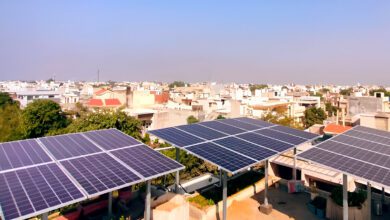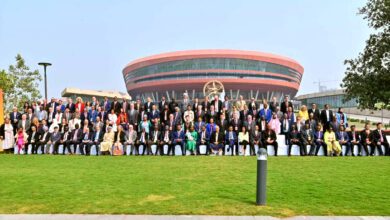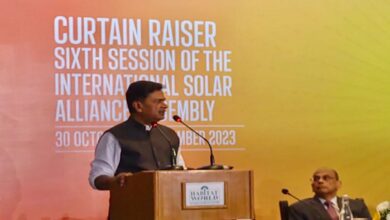In what can be termed as a big boost to accelerate global adoption of solar energy, the US on Wednesday joined the International Solar Alliance (ISA) as the 101st member country, a development welcomed by India.
IANS had reported on September 13 about the likelihood of the US joining the ISA when Indian Environment, Forest & Climate Change Minister Bhupinder Yadav and US Special Presidential Envoy for Climate, John Kerry had jointly launched the Climate Action and Finance Mobilization Dialogue (CAFMD), which is one of the two tracks of the India-US Climate and Clean Energy Agenda 2030 partnership launched at the Leaders’ Summit on Climate in April 2021 by Prime Minister Narendra Modi and US President Joe Biden.
Signing the framework agreement of the ISA to catalyze global energy transition through a solar-led approach, on the sidelines of the ongoing climate change conference, COP26, at Glasgow, Kerry said: “It has long been coming, and we are happy to join the International Solar Alliance, which Prime Minister Narendra Modi took the lead in making. We worked out the details and this is a process we are pleased to be a part of.”
“This will be an important contribution to more rapid deployment of solar globally. It will be particularly important for developing countries.”
Welcoming the US as the 101st member of the ISA, Yadav said: “This move will strengthen the ISA and propel future action on providing a clean source of energy to the world.” ISA Director General, Ajay Mathur, said: “The US’ endorsement of ISA’s framework and approach is an heartening development, especially as our 101st member nation, which is a significant milestone in itself, demonstrating that nations across the world are recognizing the economic and climate mitigating value of solar, as well as this energy source’s potential as a catalyst for global energy transition.”
Launch of the International Solar Alliance (ISA) was announced by Prime Minister Modi and then French President Francois Hollande on November 30, 2015 at the 21st session of United Nations Climate Change Conference of the Parties (COP21) in Paris. Then UN Secretary-General, Ban Ki-moon had attended the launch, alongside the heads of about 120 nations, who had affirmed their participation in the Alliance to dedicate efforts for promotion of solar energy.
The framework was first circulated for countries’ support in 2016. It emphasizes delivering global relevance and local benefit to all countries through collaborations, with ISA’s key interventions focusing on readiness and enabling activities, risk mitigation & innovative financing instruments to facilitate the promotion and deployment of solar technologies in target markets.
The approach and methods detailed in the framework have already delivered results, with ISA building a solar project pipeline of nearly 5 GW installed capacity. The approach detailed in this framework will culminate in a vision for interconnected global grids, which was formalized and jointly launched as the ‘Green Grids Initiative – One Sun One World One Grid’ (GGI-OSOWOG), during the World Leaders Summit of the COP26 in Glasgow on November 2 by the India Presidency of International Solar Alliance (ISA) and UK Presidency of COP26.
Earlier at COP26, the US also joined the Steering Committee of the GGI-OSOWOG comprising five members – India, Australia, France, the UK, and US – and endorsed the ‘One Sun Declaration’ along with 80 countries. US’ Secretary of Energy Jennifer Granholm had said that “the Grid-Sun combination will save the planet. The GGI-OSOWOG is focusing on the two most important pieces of the puzzle. We at the US Department of Energy are happy to be a partner with GGI-OSOWOG”.
Kerry had, during the Fourth General Assembly of ISA in October 2021 in Delhi, said that ISA is critical to reducing greenhouse gas emissions and has an opportunity to accelerate solar power’s growth with member countries blessed with the world’s strongest sunlight.
Stating that “solar energy is at the heart of the urgent climate action,” he had urged nations to take dramatic action to keep the 1.5-degree Celsius temperature rise and mid-century net zero emissions targets within reach.













